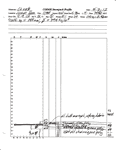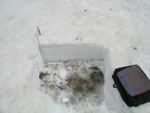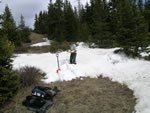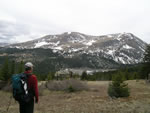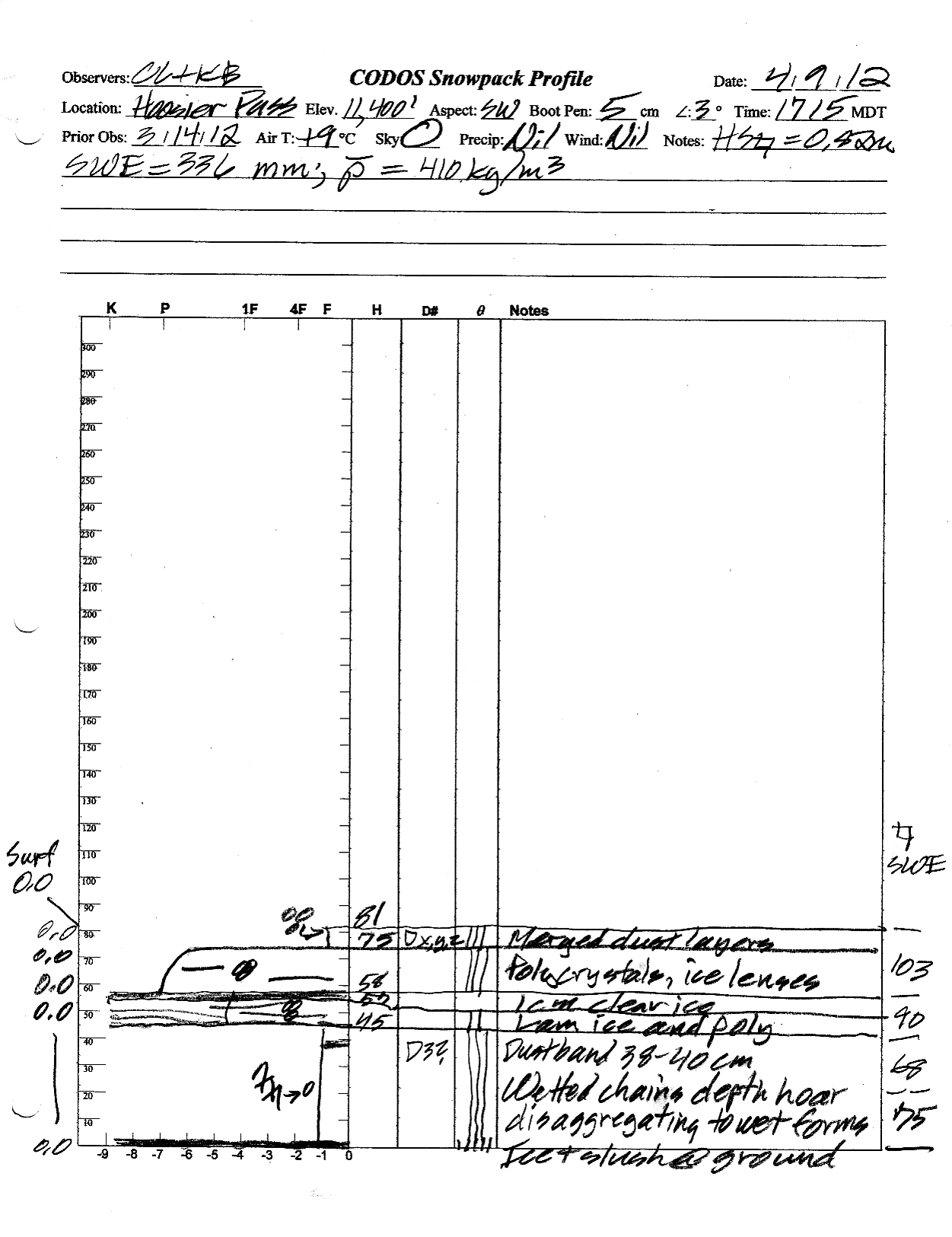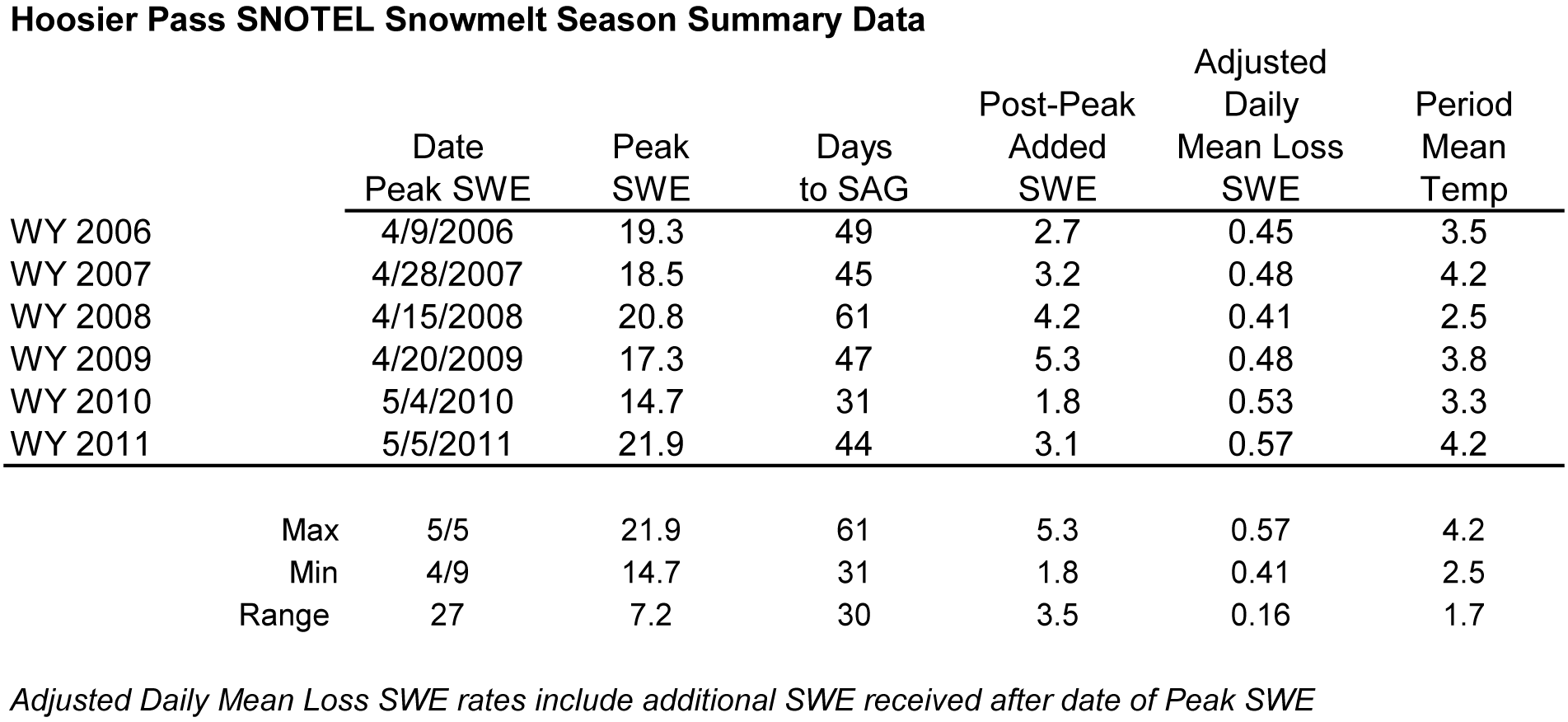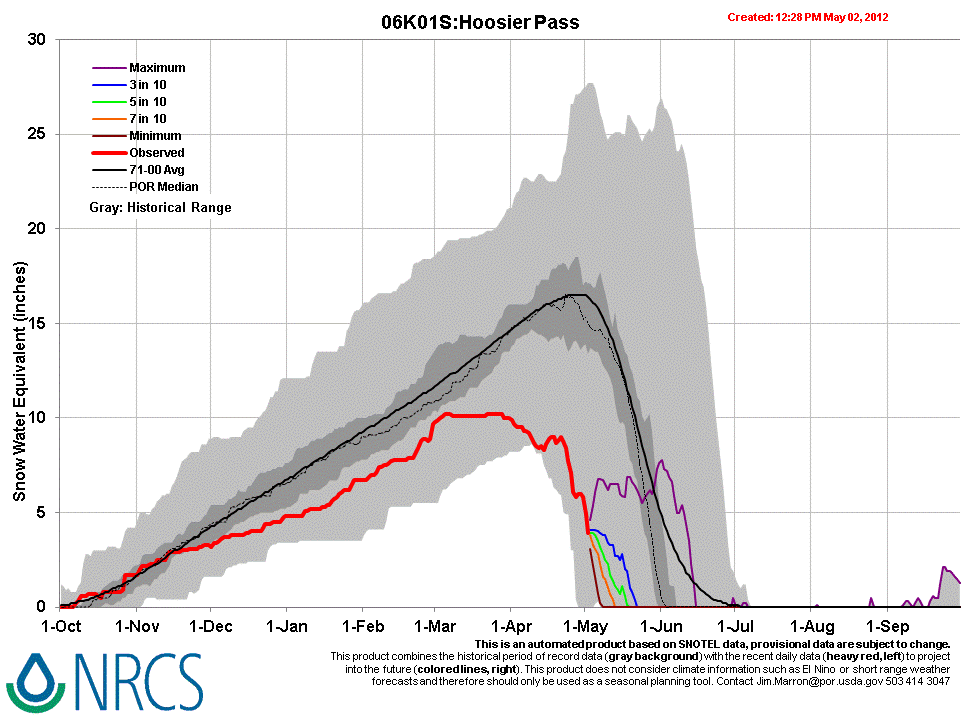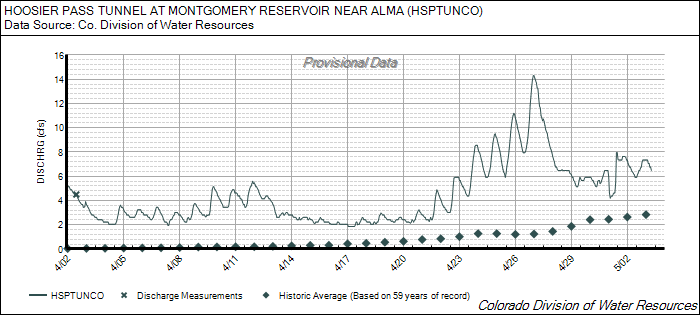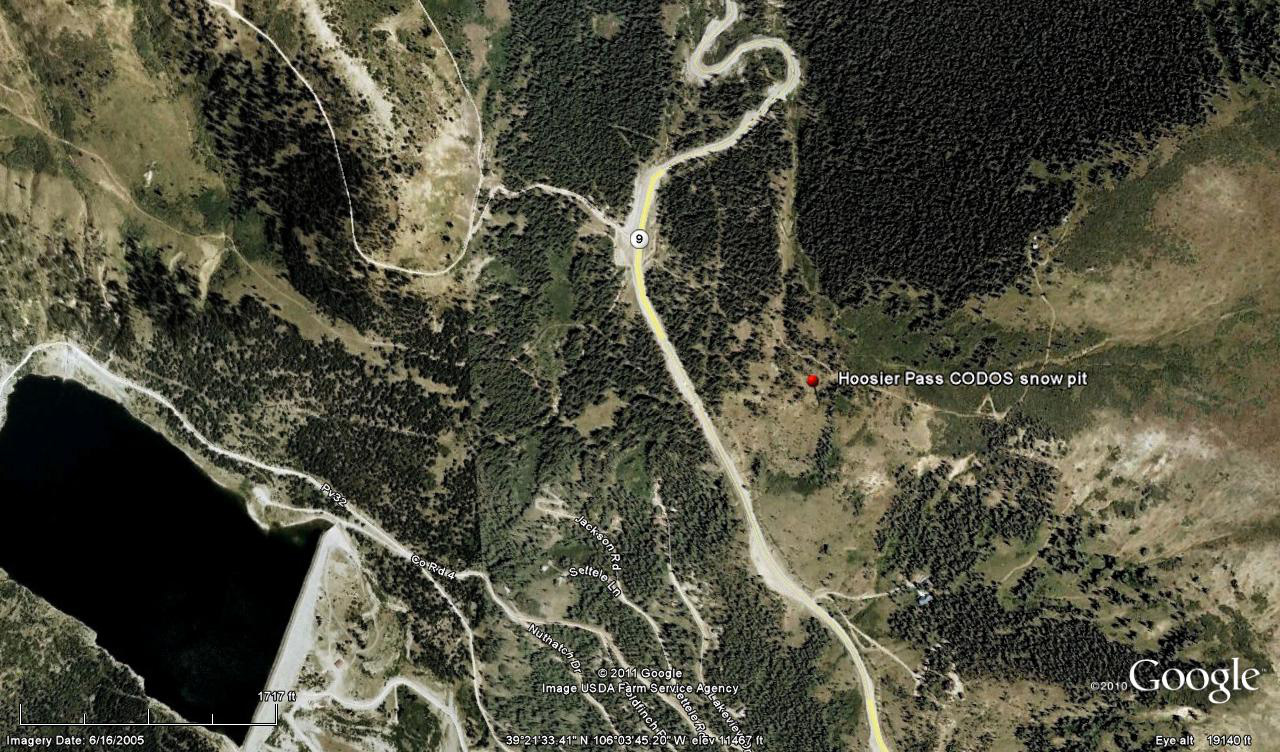 CODOS Update for Hoosier Pass:
CODOS Update for Hoosier Pass:
Visited May 2, 2012
Summary |
Snowpack |
Melt Rate |
Stream Flows |
Forecast |
Previous Update
Summary
Since our prior site visit, on April 9th, Hoosier Pass received only 1.7” of additional precipitation, as snow. Storms in mid-month and several other small snowfalls resulted in periodic restoration of higher snow albedo followed by a return to dust-reduced albedo values. As of today, May 2, the Hoosier Pass CODOS study site does retain snow cover, but as an isolated patch of snow within a largely snow-free slope. Nonetheless, we could finish our time series of adjoining snowpits and found that since April 9th the site had a net loss of some 6.0” (153 mm) of SWE. The May 2nd pit retains 7.2” (183 mm) of SWE in 18.5” (47 cm) of wet, isothermal snow, but no snow was present just a few yards from this patch of lingering snow. Dust was merged at the snowpack surface at substantially lower concentration, producing less albedo reduction, than recently observed at Senator Beck Basin or at other Front Range CODOS sites.
Snowmelt runoff is now dependent on snowcover remaining primarily on north aspects and wind loaded east aspects at the highest elevations; other aspects are notably free of snow. Streamflow data for the Blue River near Dillon show well above median flows throughout April, into early May.
SnowPack Discussion
On May 2nd our Hoosier Pass CODOS snowpit site still contained snowcover, with the locations of our two prior pits evident, and enough snow left to perform a final snowpit next to our prior pit. That snow profile found a completely isothermal and wetted snowpack with merged dust exposed at the snowpack surface; no recent clean snow was observed in Hoosier Pass vicinity. Dust concentrations on the snowpack surface at this site were substantially lower than those observed at Swamp Angel Study Plot on Monday, April 30th, or at our other Front Range sites, but are certainly sufficient to absorb additional radiation and hasten the remainder of the snowmelt cycle.
Since our prior April 9th snowpit, total snowcover depth and snowpack SWE decreased at our Hoosier Pass CODOS plot by 13” and 6”, respectively, despite additions of nearly 2” of precipitation from new snow during mid-late April. Our snowpit, adjacent to our April 9th profile location, retains only 18.0” of snow containing just 7.2” of SWE, but this patch of lingering snow quickly tapered off to bare ground farther to the west, and we approached the site on a completely snow free southwest-facing slope from the highway below. Thus, the CODOS site represents the few locations at treeline that do retain snowcover, but the vast majority of open terrain is now snow-free, and snowcover in the forested areas around and north of Hoosier Pass is approaching complete ablation as well.
| May 2, 2012: | |||
| April 9, 2012: | |||
Melt Rate
Following an early and low Peak SWE of 10.2” on March 22nd -28th, SWE levels were notably stable, with only short episodes of melt coinciding with deposition of dust layers D6, D7, and D8, through mid-April. Our April 9th site visit found all dust merged at the snow surface, but in low concentrations. Some additions of SWE followed and restored higher snow albedo, in mid-late April, before the re-emergence of the merged D4-D8 dust to the snowpack surface and an acceleration of snowmelt rates of up to 1.0” per day for several days at the end of the month, before another light snowfall. At current melt rates, at up to 1” SWE loss per day, the remaining snow on the Hoosier Pass Snotel will be short lived and this site could experience a very early date of SAG nearing the earliest date in its period of record.
Stream Flows
The USGS Blue River near Dillon gauge reported well above median flows when data began in late March, quickly followed by a significant surge in early April. Even with subsequent small surges in, flows have generally trended downward toward median levels, but discharge still remains above median values. The Hoosier Pass Tunnel gauge shows a significant surge in flows following the period of unsettled weather and new snow in mid-April, rising to well above median flows before the more recent period of unsettled weather at the end of April and up to the present.
Forecast
The National Weather Service’s Grand Junction office expects drier but windy weather for the remainder of the week, possibly producing critical fire weather in western valleys on Thursday and Friday. Then, over the weekend, a trough now in the Pacific Northwest will begin influencing Colorado weather but, despite uncertainty about how that trough may split, the system may be moisture starved and produce only scattered shower activity early next week, under near-normal temperatures.

